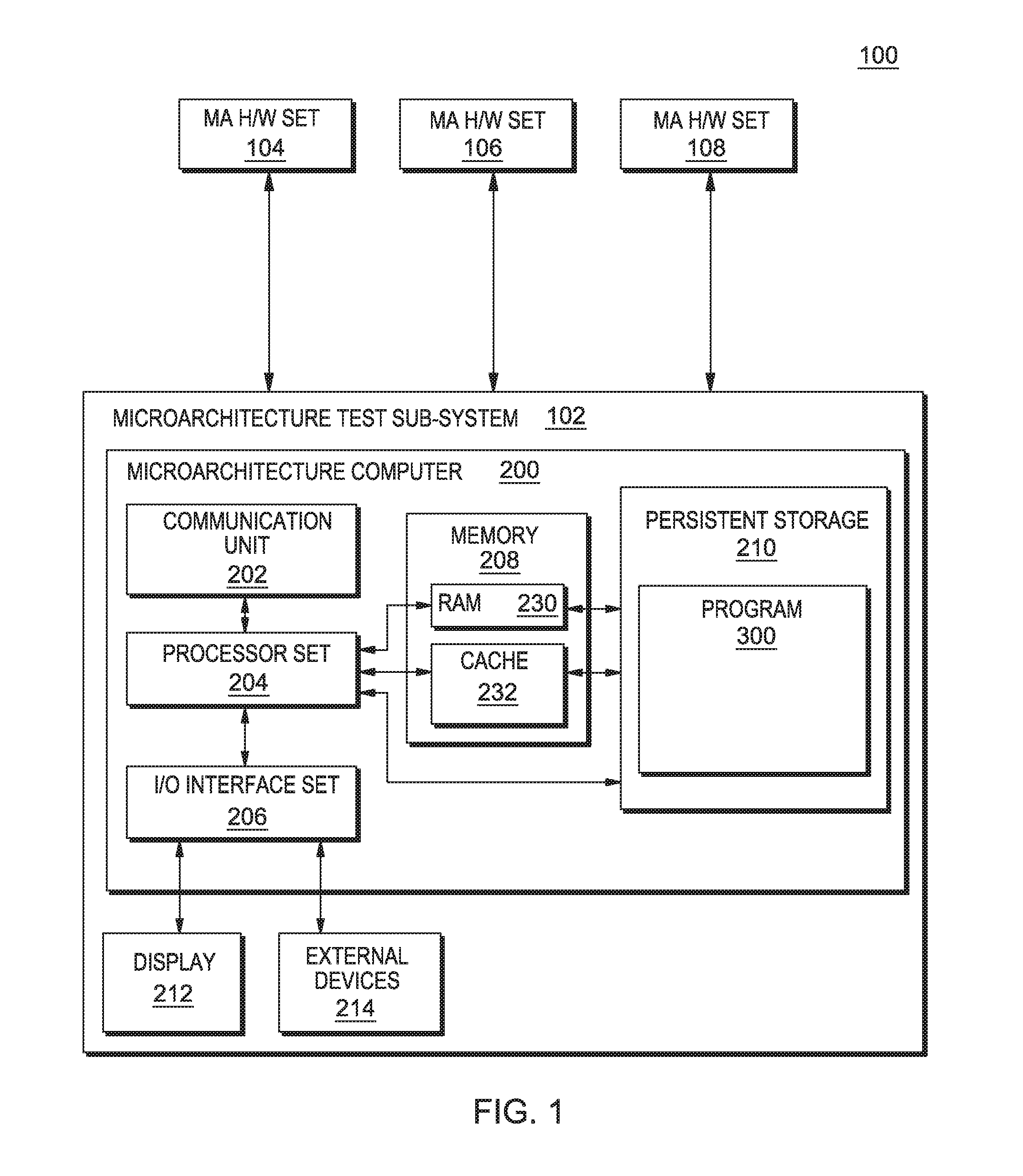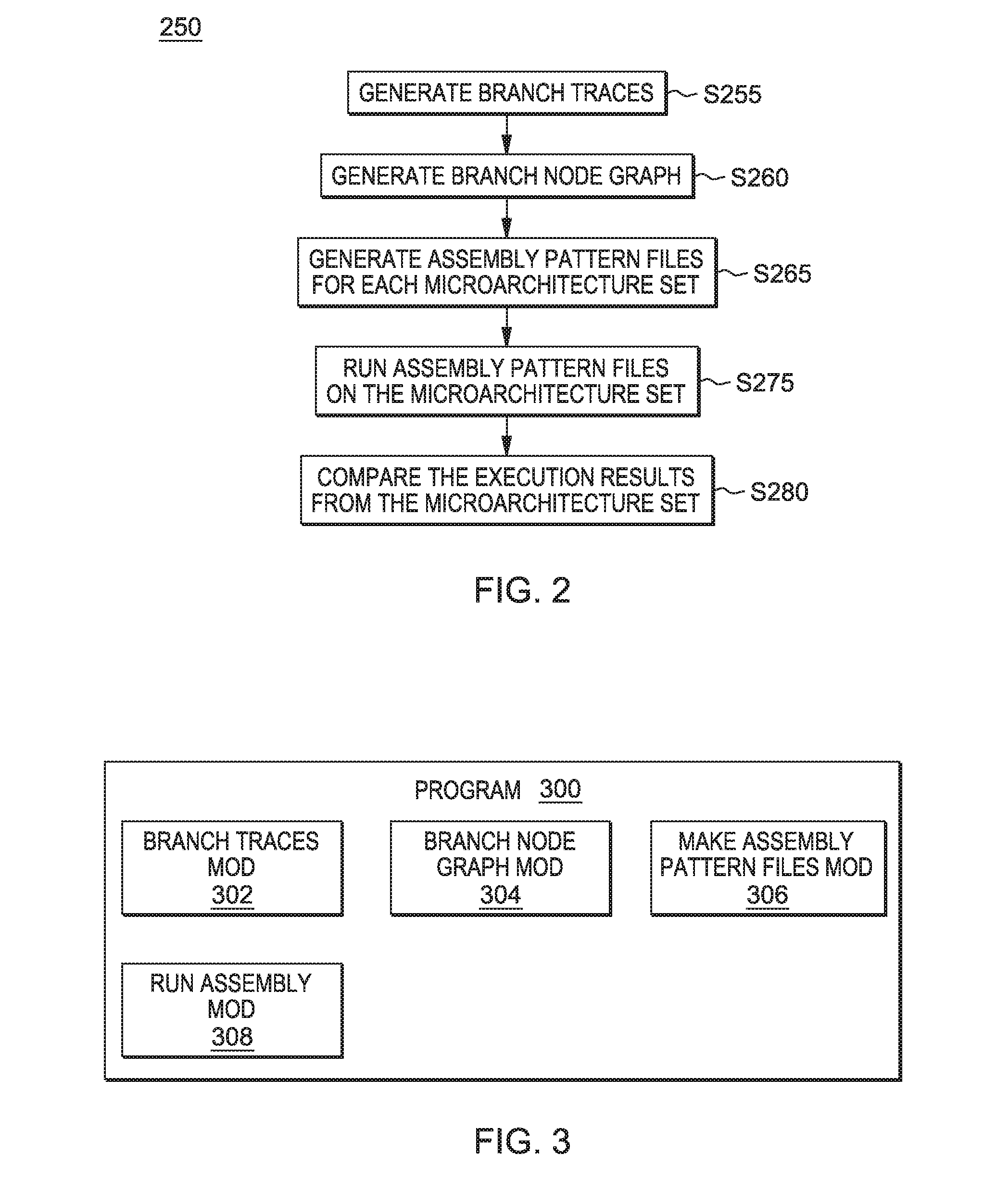Branch synthetic generation across multiple microarchitecture generations
a microarchitecture and branch technology, applied in the direction of source code creation/generation, program control, instruments, etc., can solve the problems of difficult to evaluate the branch performance across multiple generations of microarchitecture, control flow and path prediction is not always straightforward, and the performance of branch performance is difficult to evalua
- Summary
- Abstract
- Description
- Claims
- Application Information
AI Technical Summary
Benefits of technology
Problems solved by technology
Method used
Image
Examples
example embodiment
[0041]II. Example Embodiment
[0042]FIG. 2 shows flowchart 250 depicting a method according to the present invention. FIG. 3 shows program 300 for performing at least some of the method steps of flowchart 250. This method and associated software will now be discussed, over the course of the following paragraphs, with extensive reference to FIG. 2 (for the method step blocks) and FIG. 3 (for the software blocks).
[0043]Processing begins at step S255, where branch traces module (“mod”) 302 generates a set of branch traces in any way currently conventional or to be developed in the future. The Further Comments And / Or Embodiments sub-section, below, of this Detailed Description section gives a more specific example of the generation of a set of branch traces.
[0044]Processing proceeds to step S260, where branch node graph mod 304 generates a branch node graph based on the branch traces. The Further Comments And / Or Embodiments sub-section, below, of this Detailed Description section gives a ...
PUM
 Login to View More
Login to View More Abstract
Description
Claims
Application Information
 Login to View More
Login to View More - R&D
- Intellectual Property
- Life Sciences
- Materials
- Tech Scout
- Unparalleled Data Quality
- Higher Quality Content
- 60% Fewer Hallucinations
Browse by: Latest US Patents, China's latest patents, Technical Efficacy Thesaurus, Application Domain, Technology Topic, Popular Technical Reports.
© 2025 PatSnap. All rights reserved.Legal|Privacy policy|Modern Slavery Act Transparency Statement|Sitemap|About US| Contact US: help@patsnap.com



